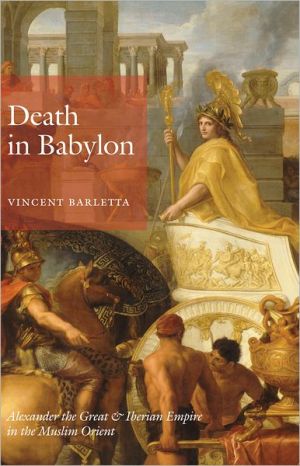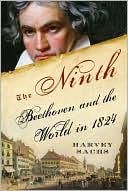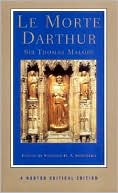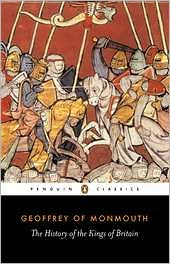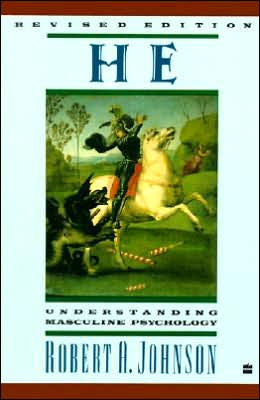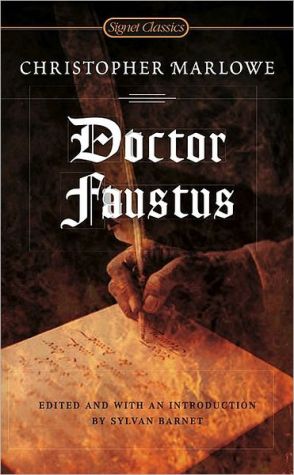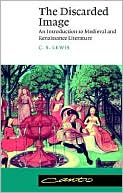Death in Babylon: Alexander the Great and Iberian Empire in the Muslim Orient
Though Alexander the Great lived more than seventeen centuries before the onset of Iberian expansion into Muslim Africa and Asia, he loomed large in the literature of late medieval and early modern Portugal and Spain. Exploring little-studied chronicles, chivalric romances, novels, travelogues, and crypto-Muslim texts, Vincent Barletta shows that the story of Alexander not only sowed the seeds of Iberian empire but foreshadowed the decline of Portuguese and Spanish influence in the centuries...
Search in google:
Though Alexander the Great lived more than seventeen centuries before the onset of Iberian expansion into Muslim Africa and Asia, he loomed large in the literature of late medieval and early modern Portugal and Spain. Exploring little-studied chronicles, chivalric romances, novels, travelogues, and crypto-Muslim texts, Vincent Barletta shows that the story of Alexander not only sowed the seeds of Iberian empire but foreshadowed the decline of Portuguese and Spanish influence in the centuries to come. Death in Babylon depicts Alexander as a complex symbol of Western domination, immortality, dissolution, heroism, villainy, and death. But Barletta also shows that texts ostensibly celebrating the conqueror were haunted by failure. Examining literary and historical works in Aljamiado, Castilian, Catalan, Greek, Latin, and Portuguese, Death in Babylon develops a view of empire and modernity informed by the ethical metaphysics of French phenomenologist Emmanuel Levinas. A novel contribution to the literature of empire building, Death in Babylon provides a frame for the deep mortal anxiety that has infused and given shape to the spread of imperial Europe from its very beginning.
DEATH IN BABYLON\ Alexander the Great & Iberian Empire in the Muslim Orient \ \ By Vincent Barletta \ THE UNIVERSITY OF CHICAGO PRESS\ Copyright © 2010 The University of Chicago\ All right reserved.\ ISBN: 978-0-226-03736-3 \ \ \ Chapter One\ DEATH AND THE OTHER An Introduction \ Isti cum omnia concuterent, concutiebantur.\ [As these men were shaking the world, they themselves were being shaken.] SENECA, Ad Lucilium Epistolae morales\ Aschenbach's half-distracted, half- inquisitive scrutiny of the stranger may have been lacking in discretion, for he suddenly perceived that the man was returning his stare. THOMAS MANN, Death in Venice\ AS IS PERHAPS EVIDENT FROM THE SECOND OF THE TWO EPIGRAPHS printed above, the present book has emerged in large part through a reading of Thomas Mann's Death in Venice. This may at first seem odd, because Gustav von Aschenbach's voyage into desire, illness, and mortal rest has, on the face of it, little to do with either the figure of Alexander the Great or the expansion of Iberian empire into Muslim Africa and Asia during the fifteenth and sixteenth centuries. The story of an aging German writer, a young Polish boy, and an epidemic of Indian cholera in early twentieth-century Venice is of course compelling in its own way; but it does not concern itself with the epic sweep of imperial war, colonization, and the quest for immortality that shape, as Alexander does, theorizations of early modern Iberian incursions into Africa and Asia, and the resistance that these incursions meet in the process.\ The question of resistance, however, is a complex one, and it is here that my reading of Mann has shaped, somewhat idiosyncratically, the present book. From a historical point of view, it is generally accepted that during the long initial push of Iberian expansion into Africa and Asia, more or less from the Portuguese conquest of Ceuta in 1415 to the Battle of the Three Kings at al-Qasaral-Kbir in 1578, the kingdoms of Aragon, Castile, and Portugal were consistently engaged in tense commerce and at times open conflict with Muslim kingdoms that were in many cases their political, economic, and technological equals. The consequences that the fifteenth-century rise of the Ottoman Turks had for the imperial and commercial pretensions of the Crown of Aragon in the Eastern Mediterranean and North Africa are well known. Castile's ongoing conflicts with Granadans, Turks, and Moroccans throughout the fifteenth and sixteenth centuries have inspired an immense body of literature, including much of Miguel de Cervantes's written work. With respect to Portugal, the chronicles of exploration and colonial government are nearly filled with examples of violent setbacks and resistance on the part of African and Asian Muslims, and much modern scholarship in history and literature has likewise focused on the tense struggles that dominated Luso-Muslim relations within Africa and Asia.\ Leaving aside for the moment an analysis of the ways in which Iberian authors theorized the deep angst produced by Muslim power in Africa and Asia (not to mention, in certain contexts, the power demonstrated by Muslims in the Iberian Peninsula itself), it is useful to develop a broader sense of the direct ways in which that power expressed itself. To this end, we may take a brief example from Fernão Mendes Pinto's Peregrinação (Travels), namely, the situation faced by Henrique Barbosa and his men in the area of the Arabian Peninsula bordering the Gulf of Aden and its relation to the Turkish attack on the Portuguese fortress at Diu in 1538:\ Daqui desta paragem nos partimos para Arquico, terra do Preste João, a levar uma carta que António da Silveira mandara a um tal Henrique Barbosa, feitor seu, que lá andava havia três anos, por mandado do governador Nuno da Cunha, o qual com quarenta homens que trazia consigo escapara do levantamento de Xael onde ficaram cativos D. Manuel de Meneses e mais cento e sessenta portugueses, e tomaram quatrocentos mil cruzados e seis naus portuguesas, que foram as que Solimão Baxá vice-rei do Cairo, levou com os mantimentos e munições da sua armada quando no ano de mil quinhentos e trinta e oito veio pôr cerco à fortaleza de Diu, por lhas ter mandado ao Cairo o rei de Xael, com sessenta portugueses de presente, e dos mais fez esmola ao seu Mafamede, como cuido que dirão largamente as histórias que tratam do governo da Nuno da Cunha. [From this stop we left for Arkeeko, in the land of Prester John, to deliver a letter that António da Silveira had sent to his factor, a man named Henrique Barbosa, who had been there for three years by order of the governor Nuno da Cunha. Barbosa, and forty men that he brought with him, had escaped from the uprising at al-Shihr, where Dom Manuel de Meneses and 160 Portuguese had been taken captive. The insurgents took 400,000 cruzados and six Portuguese caravels. These same caravels were those later used by the viceroy of Cairo, Pasha Suleyman, to transport supplies and munitions for his fleet when in 1538 he laid siege to the fortress of Diu. Pasha Suleyman had received the ships in Cairo, along with sixty Portuguese captives, as a gift from the king of al-Shihr. The rest of the captives were given to Mu. hammad [the Sharif of Mecca], as I believe the chronicles that deal with the government of Nuno da Cunha will speak of at some length.]\ The image that Mendes Pinto presents, of stranded Portuguese sailors and captives sold into slavery, of Portuguese caravels converted into Turkish supply ships during the first of many sieges on the colonial fort on the southern tip of the Kathiawar Peninsula in Gujarat, and of a continued search in Abyssinia for a nonexistent Christian king who might aid the Portuguese in their fight against the Turks, is one of unpredicted reverses and very real dangers for the Portuguese. What comes through in Mendes Pinto's narrative, beyond the material losses involved in Portugal's efforts to secure overseas colonies in Muslim territory, is the ability of African and Asian Muslims to respond to such efforts.\ Taking into account the bigger canvas of Portuguese expansion into Asia, C. R. Boxer has argued in terms that support the more focused view provided by Mendes Pinto. In his authoritative and sweeping The Portuguese Seaborne Empire, 1415–1825, Boxer argues that\ when all is said, the Portuguese achievement in establishing a seaborne empire in Monsoon Asia was no less remarkable than that of the Spaniards in establishing their land- based empire in America. Perhaps even more so, when we consider that the population of Portugal in the sixteenth century probably never exceeded about a million and a quarter souls; that there was a perennial shortage of Portuguese shipping; that Goa was the only Portuguese port in Asia with adequate dockyard facilities; and that the Portuguese had many other commitments in Morocco and West Africa, to say nothing of their efforts to colonise the Brazilian coast from 1539 onwards. Moreover, the technological gap between the Portuguese and the majority of their Asian opponents was much less than that between the Spaniards and the Amerindians of the New World. Diogo do Couto (1543–1616) and other contemporary Portuguese chroniclers were fond of pointing out that their compatriots in Asia had to contend with well-armed opponents who were as skilled in the use of firearms as themselves; whereas the Castilian conquistadores of Mexico and Peru had to overcome primitive warriors armed only with stone and wooden weapons.\ Moving back from Boxer's description of the Iberian empire during the sixteenth century to an account of the fi rst stage of Portugal's imperial push into North Africa at the start of the previous century, we see that the issues described by Boxer were there from the very beginning. The taking of the city of Ceuta, somewhat fancifully described by Gomes Eanes de Zurara (c. 1410–1474) in his Crónica da tomada de Ceuta (Chronicle of the Conquest of Ceuta) as a kind of epic pretext for the ceremony of chivalric investiture that runs through and underlies it, was in no sense the foregone conclusion that Zurara describes it to have been. Even Zurara admits that João I (1357–1433) and his advisers had little sense of the heavily fortified city's basic layout prior to their expedition, a fact that could have proven disastrous even as nonintervention treaties with the Castilians and the Nasri Granadans somehow managed to hold.\ For the Crown of Aragon, the Christian loss of Constantinople in 1453 to the forces of Mehmed II (1432–1481), especially given the kingdom's commitments in southern Italy, made an impact that is difficult to calculate. The taking of Constantinople ruptured, or at least drastically reconfigured, important commercial sea lanes through the eastern Mediterranean, and it rendered the promise of a seaborne empire—an Aragonese dream since at least the reign of Jaume I (1208–1276)—a chimera. This reversal quickly found expression in Catalan literature, and prose works of the fifteenth century, such as Joanot Martorell's Tirant lo Blanc (Tirant the White) and the anonymous Curial e Güelfa (Curial and Guelfa), reflect this tendency.\ Looking briefly at Curial e Güelfa, we see how the scene of Curial's shipwreck near Tripoli, a shipwreck that would lead to a long period of enslavement, presents the very real dangers associated with sea travel in the Mediterranean and the violent confrontations that often characterized relations between Aragonese Christians and Maghrebi Muslims in that region, especially in light of the ascendance of the Ottoman Turks:\ Emperò les ones creixien, e la mar bramava molt espaventablemente e tempestejava aquella mesquina galera, la qual feia molta aigua e era en punt de perdre's; e així anà tot aquell jorn e la nit segünt, fins al terç jorn, que ferí en terra davant Trípol de Barberia. E com hagués poc temps que certes galeres e terides del rei d'Aragó haguessen donats grans dans en aquella ribera, e se n'havien aportades moltes ànimes e dues galeras armades de moros e cremades moltes altres fustes menors, estava tota aquella ribera ab les orelles alçades; per què los moros, qui veren la galera venguda a través, corregueren allà e, veent que eren cristians, aquells pocs que en la galera trobaren vius foren mesos a espasa e tots tallats en peces. E no escaparen sinó Curial e un gentil home català qui havia nom Galceran de Mediona, home valent e de gran esforç; e aquests no foren escapats, sinó que pensàvan que éran morts, qui així com a morts en la cambra jaïen. Emperò passada la furor als moros, trobaren que eren vius, e traguerenlos de la galera assats vituperosament, e, ab les mans lligades, foren venuts a poc preu, car no pensàven que poguessen escapar en manera del món, e foren comprats per un moro estranger, lo qual dins terra més de quaranta llegüs los més. E aquell moro, despuis, los vené a un cavaller de Tunis molt ric e avar, jove emperò lo qual dins pocs dies, carregats de cadenes e de ferros, a peu, tots nuus, ab poc menjar e menys beure, plens de desaire e de mala sort, a Tunis los menà.\ [The waves grew, however, and the sea roared fearsomely and tossed around that poor galley, which took on a good deal of water and was on the point of being lost; and in this way it spent all that day and the following night, until the third day, on which it struck land off Tripoli, in Barbary. Shortly before some galleys and frigates belonging to the king of Aragon had done great damage on that shore and had taken off many souls and two armed galleys filled with Muslims and burned many other smaller foists, and so that entire shore was on a state of alert; so the Muslims, who saw the galley come ashore, ran to it straightaway. Seeing that the few men that they found still alive in the galley were Christians, they put them to the sword, hacking them to pieces. The only ones who escaped were Curial and a Catalan gentleman named Galceran de Mediona, a brave and strong man; and these men escaped the sword only because they were thought to be already dead, for they lay in their cabin like corpses. Once the anger of the Muslims had abated, however, they discovered that the two men were alive, and they dragged them harshly from the galley. Then, with their hands bound, they were sold as slaves at a low price given that it was believed that there would be no way that they would survive for long. They were sold to a Muslim man from another region, who took them inland more than forty leagues. That Muslim then sold them to a very rich and tightfi sted young gentleman from Tunis, who in a few days led them—in chains and irons, completely naked, with little to eat and less to drink, and full of misery and misfortune—to Tunis.]\ Beyond the broader question of fortune, shipwreck, Curial's seven- year enslavement in Tunis and his eventual liberation and return to power (the description of his reading the Aeneid in Arabic with the daughter of his captor and of her Dido-inflected suicide over the love she feels for Curial is especially powerful), the image this passage presents of Christian-Muslim relations in the Mediterranean—developed to an even greater degree in Tirant lo Blanc—is one of violence, retribution, fear, and enslavement, but also of intimacy and extreme mutual vulnerability. For the Aragonese, Maghrebi Muslims are not merely infi dels to be summarily conquered, but rather a dangerous and highly forceful Other just as capable of enslaving Christians and stripping them of their power as they are of being enslaved themselves.\ For the Crown of Castile, Muslim military and cultural power had been, by the beginning of the fifteenth century, a daily fact of life for seven centuries. Although the Crown of Aragon had moved south as far as Murcia under Jaume I (Jaume was stopped by the Castilians), its attentions and resources had long been focused on the Mediterranean and its naval power. The Portuguese, who had forged their kingdom in 1143 out of a war with the Almoravids and a state of almost constant conflict with the Castilians and Leonese, were by the start of the fifteenth century principally focused on expansion into the Atlantic and beyond. The Castilians, on the other hand, were largely concerned with acquiring the vast stretches of Muslim land to the south of them then held by the Nasri dynasty and with their capital in the city of Granada.\ Writing in the aftermath of the late sixteenth-century war in the Alpujarras between Granadan Muslims and the Crown of Castile (won decisively by Castile after nearly three years of fighting), Luis del Mármol Carvajal offers a vivid description of the conditions under which Isabel I of Castile and her husband, Ferran II of Aragon, came to the decision to do away with the kingdom of Granada once and for all:\ La última guerra que los príncipes cristianos tuvieron en España con los reyes moros, fue la conquista que los Católicos Reyes don Hernando y doña Isabel hicieron en el reino de Granada, de la cual hacemos mención en esta historia, por no dejar atrás cosas de las que faltando podrían desgustar al lector. Todas las otras que fueron antes della se hallarán escritas en nuestra general historia de África, en el segundo libro del primer volumen. Siendo pues rey de Granada un valeroso pagano del linaje de los Alahamares, llamado Abil Hascen, cerca de los años de Cristo 1480, y del imperio de los alárabes 892, en la ocasión de la guerra que los Reyes Católicos tenían con el rey de Portugal, juntó sus gentes, y hizo grandes daños en los lugares de la Andalucía y del reino de Murcia. Y como no pudiesen acudir a todas partes, hicieron treguas con él, durante las cuales, en el año de nuestra salud 1482, siendo el moro avisado por sus espías que los cristianos fronteros de Zara, confi ados en la tregua, estaban descuidados, y que era buena coyuntura para ocupar aquella fortaleza, rompió la tregua, y juntando sus adalides y escuchas, secretamente les mandó que fuesen a escalarla una noche de grande escuridad. Sucediendo pues el efecto conforme a su deseo, entraron los adalides dentro, y ocupando la fortaleza juntamente con la villa, trataron al alcaide y captivaron cuantos cristianos hallaron con muy pequeña resistencia. Esta pédida sintieron mucho los Reyes Católicos; y porque el daño no fuese mayor, acudieron luego hacia aquella parte, proveyendo en la seguridad de sus estados; y poniendo después sus invictos ánimos contra los de aquella nación, que tan molestos eran al pueblo cristiano, determinaron de no alzar mano de la guerra hasta acabarlos de conquistar, desterrando el nombre y seta de Mahoma de aquella tierra.\ (Continues...)\ \ \ \ \ Excerpted from DEATH IN BABYLON by Vincent Barletta Copyright © 2010 by The University of Chicago. Excerpted by permission of THE UNIVERSITY OF CHICAGO PRESS. All rights reserved. No part of this excerpt may be reproduced or reprinted without permission in writing from the publisher.\ Excerpts are provided by Dial-A-Book Inc. solely for the personal use of visitors to this web site. \ \
PrefaceAcknowledgments Chapter 1. Death and the Other: An Introduction Chapter 2. The Stinking Corpse: Alexander, the Greeks, and the Romans Chapter 3. Oblivion: Iberian Empire in the Maghreb Chapter 4. Immortality: The Promise of Asia Chapter 5. Judgment: The Aljamiado Alexander Chapter 6. Conclusions Notes References Index
\ ChoiceCombining intricate factual detail with theoretical musings, Barletta considers how 15th- and 16th-century historical and literary accounts written in Iberia’s three principal Christian kingdoms—Castile, Aragon, and Portugal—offered rationales for Iberian empire-building in Muslim Africa and Asia. . . . This is impressive scholarship supported by sound documentation.—Choice \ \ — M. S. Arrington Jr.\ \ \ \ \ \ Jos� Luis Berlanga Villaca�as“Vincent Barletta’s new book is fascinating and detailed. It moves beyond established theories of imperial reason to argue that Europe's imperial adventure, deployed and theorized by means of Alexandrian myth and history, is in fact inseparable from a deep unease associated with the search for identity through the mediation of the Other. Perhaps this unease, which Emmanuel Levinas has presented as a transcendental condition of selfhood, shapes the nations of the Iberian Peninsula in particularly important ways and reveals their special fragility as human communities whose constitution cannot be separated from a relation with Islam. This book, elegant and profound, is a necessary contribution that works to uncover cultural strata that precede the imperial period described by Tzvetan Todorov while offering elements for a comparative study of empire that goes well beyond the current work of Anthony Pagden.”\ \ \ \ E. Michael Gerli“A work of sound scholarship and striking erudition, broad in scope and of remarkable depth and originality, Death in Babylon is a beautifully written book, clear yet complex, subtle yet convincing.”\ \ \ \ \ \ Choice“Combining intricate factual detail with theoretical musings, Barletta considers how 15th- and 16th-century historical and literary accounts written in Iberia’s three principal Christian kingdoms—Castile, Aragon, and Portugal—offered rationales for Iberian empire-building in Muslim Africa and Asia. . . . This is impressive scholarship supported by sound documentation.”—Choice \ \ \ \ \ \ \ Choice“Combining intricate factual detail with theoretical musings, Barletta considers how 15th- and 16th-century historical and literary accounts written in Iberia’s three principal Christian kingdoms—Castile, Aragon, and Portugal—offered rationales for Iberian empire-building in Muslim Africa and Asia. . . . This is impressive scholarship supported by sound documentation.”—Choice \ \ — M. S. Arrington Jr.\ \ \
